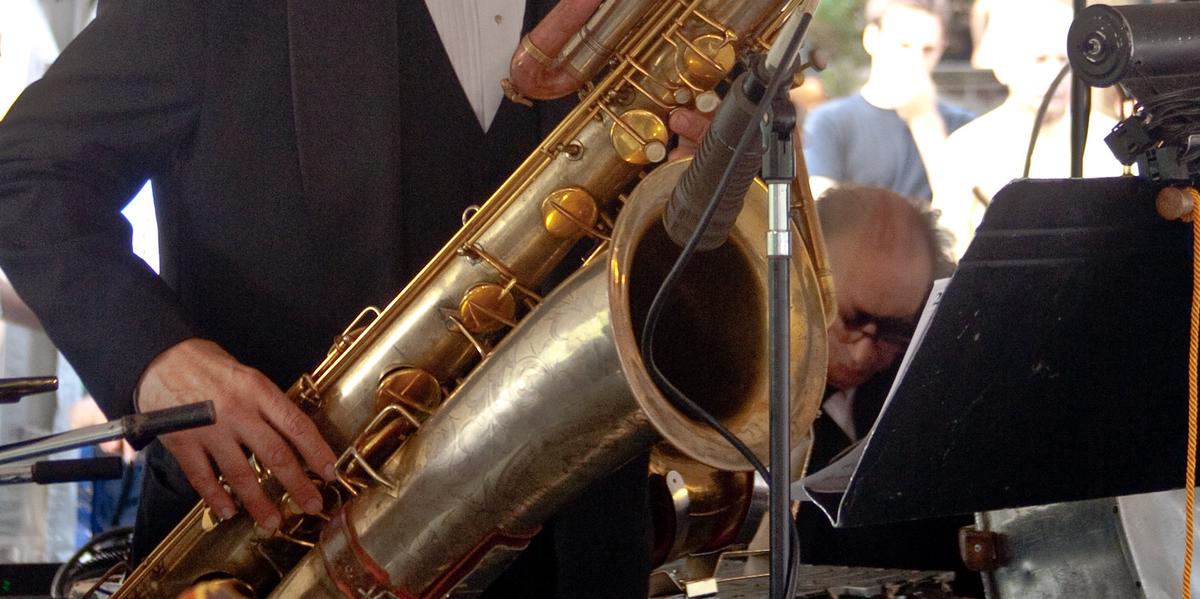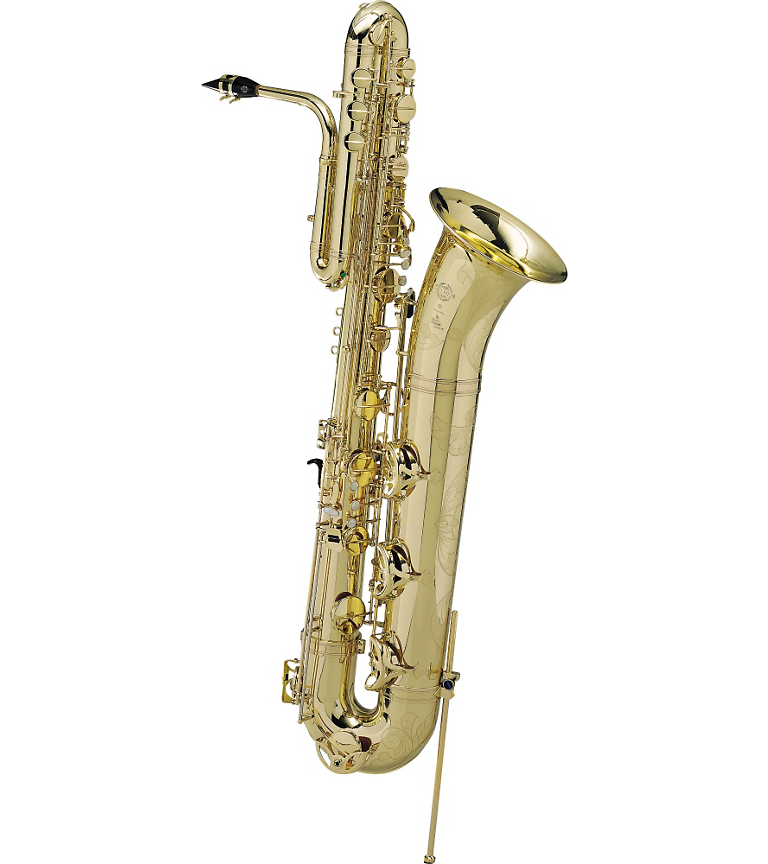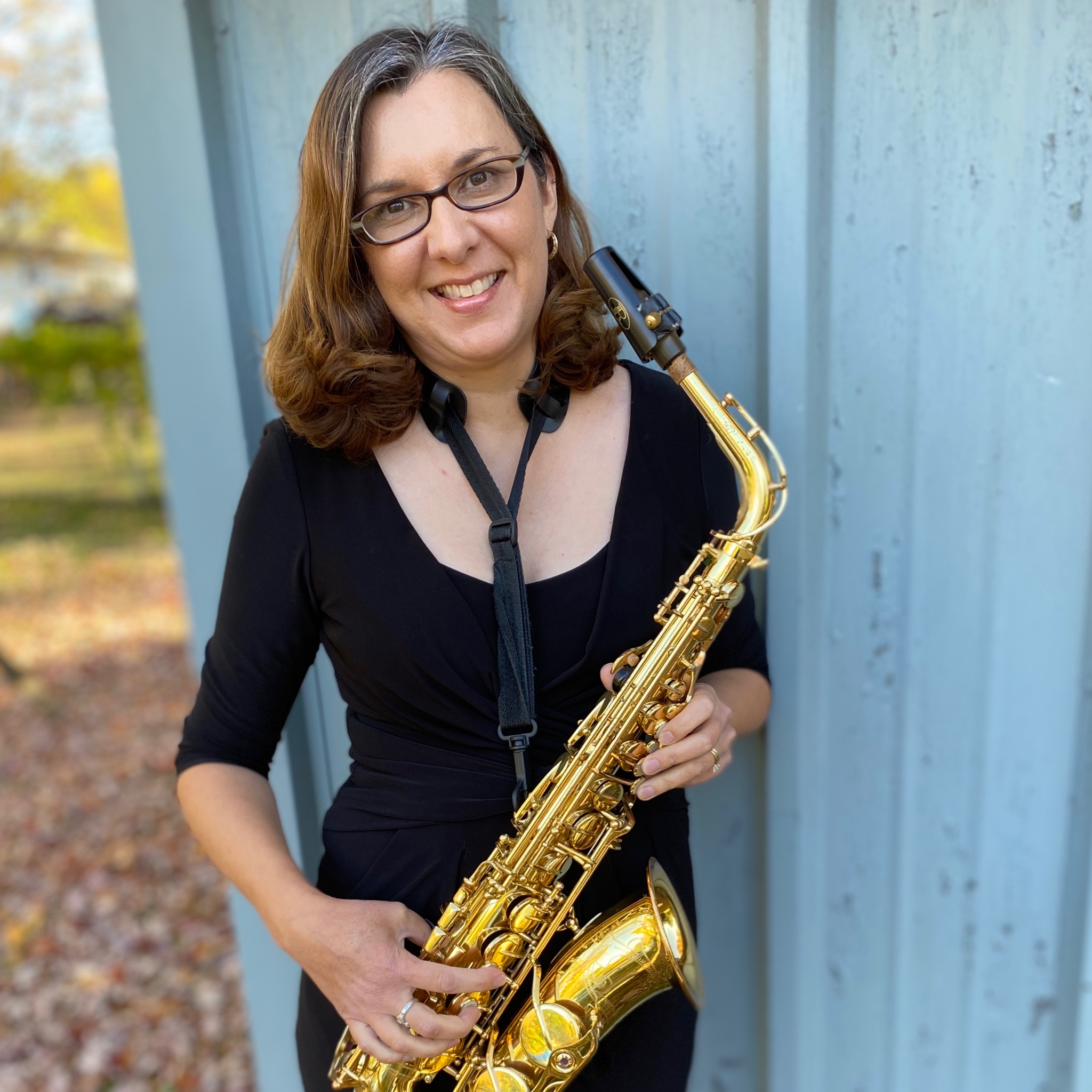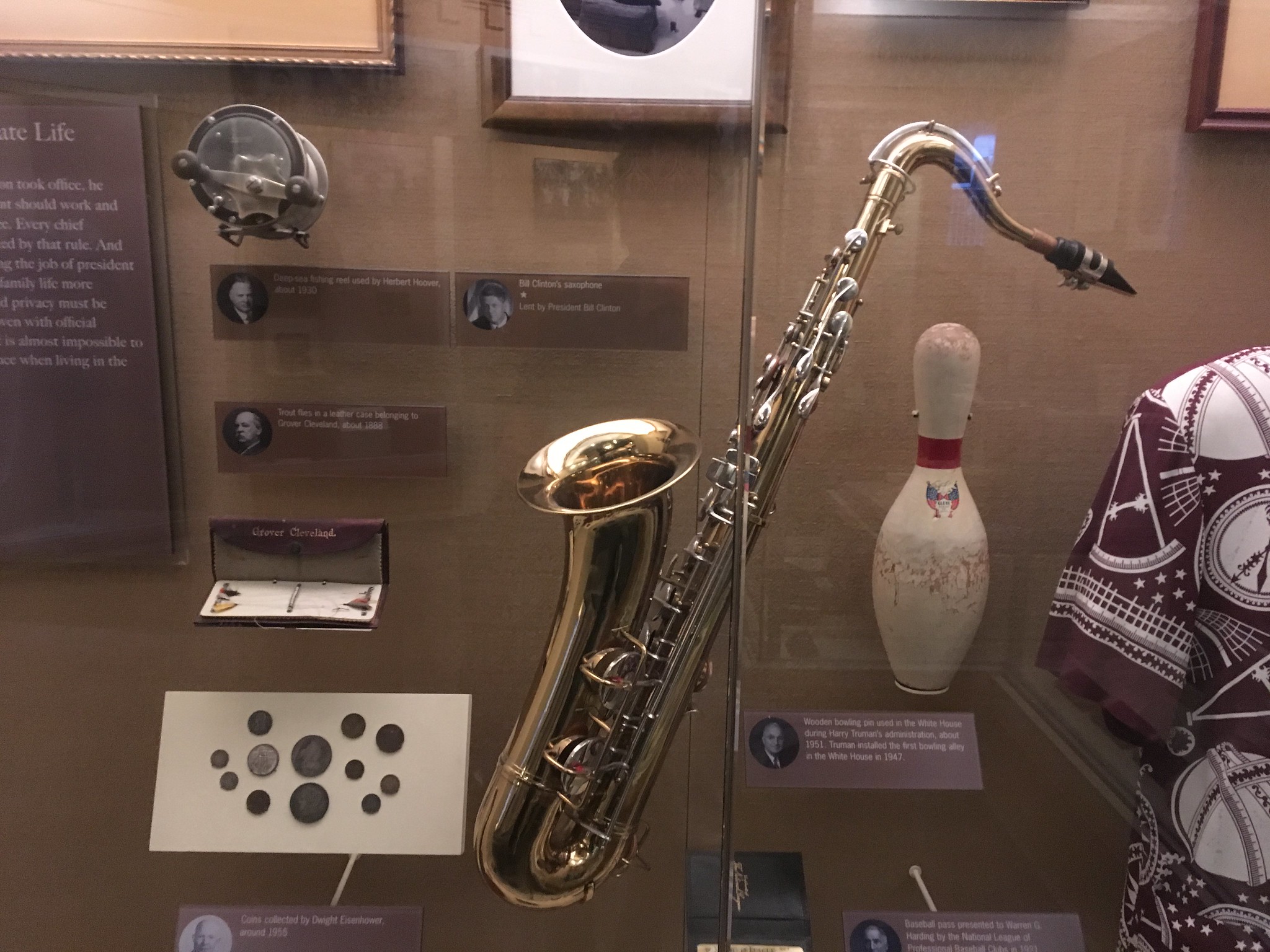The first saxophone heard in public, was a bass saxophone, played by none other than Adolphe Sax himself! This first public performance took place on February 3, 1844, in Paris. The concert featured a chamber piece, composed by Hector Berlioz, with Adolphe Sax playing his newly invented bass saxophone.
What is a Bass Saxophone?
Bass saxophones are pitched in Bb and are an octave lower than a Bb tenor saxophone. They are the next largest saxophone in the saxophone family after the commonly seen baritone saxophone, which is pitched in Eb.
There are two different styles of bass saxophones. They are the French “short wrap” style and the American “long wrap” style. The difference in the “wraps” refers to the length of the tube between bends of the upper portion of the instrument.
Selmer still produces a “short wrap” style of bass saxophone. The Selmer bass saxophones include low A and high F# keys and also come with a Selmer Paris S-80 bass saxophone mouthpiece.
Many people use baritone saxophone mouthpieces and reeds when playing bass saxophone. Companies such as Vandoren produce quality bass saxophone mouthpieces and reeds that are available today for all levels of saxophone player. In addition, check out our article on saxophone accessories!
The Popularity of Bass Saxophones
Bass saxophones were very popular in the early 1900s, but they have never really had a clear role in the music world. By the 1920s, a few people were trying to advance the bass saxophone as a solo instrument. Others were promoting its use as a substitute for string bass or tuba in jazz bands and Dixieland ensembles.
During WWII, the rationing of brass halted the manufacturing of most saxophones, including the bass. Some instrument factories, in the US, began producing parts for weapons, instead of parts for instruments. After WWII, the bass saxophone never regained the popularity it had in the 1920s and 1930s.
Today, bass saxophones are a fixture in many saxophone ensembles. Many serious players are searching out vintage Conn or Buescher bass saxophones from private collectors or on eBay.
Bass Saxophone Use in Ensembles
During the first part of the 20th century, it was common to see vaudeville acts featuring bass, or other saxophones, as “novelty” instruments.
One of the groups that performed with saxophones, was The Six Brown Brothers. They were a Canadian vaudeville group led by Tom Brown that performed comedic musical acts. The group consisted of two altos, one tenor, two baritones, and one bass saxophone. The Six Brown Brothers did many recordings under the Victor label, which can still be found on YouTube. They played many ragtime pieces, including Down Home Rag and Bull Frog Blues.
The Darling Saxophone Four, sometimes called Four Harmony Maids, was an all-female vaudeville act active in the early 1900s. They were managed by Eva Darling, and played and endorsed C.G. Conn Ltd. saxophones. Photographs of The Darling Saxophone Four show them with soprano, alto, tenor, and bass saxophones.
The Sousa Band, directed by John Philip Sousa, had a full saxophone section of four altos, two tenors, one baritone, and one bass. During the 1920s and 30s, the saxophone section not only played as a part of the band but also as a separate ensemble called, The Sousa Saxophone Corps.
One group that is active in the present day is The National Saxophone Choir of Great Britain, which includes saxophones ranging from sopranino to contrabass. They are a very high energy group, performing both classical and pop music. Their performance of Bohemian Rhapsody, on YouTube, embodies the virtuosic playing and fun choreography that they are known for!
Bass Saxophonists
There have been a few well-known bass saxophonists over the years. Many of them tried to urge the bass saxophone into main-stream music, through the jazz world.
Sidney Bechet (1897-1959) of New Orleans, Louisiana began his career as a clarinetist and then moved on to soprano saxophone. In the 1930s he was a soloist in Noble Sissle’s big band, where he doubled on baritone and bass saxophones. Bechet toured the world, playing saxophone, from the 1920s through the 1940s.
Adrian Rollini (1903-1956), a nightclub owner and recording artist, brought bass saxophone to prominence in 1920s. He was called the master of bass saxophone and was known for playing powerful, rhythmic solos. Rollini can be heard on many recordings from the early 1900s.
Harry Gold (1907-2005) was Britain’s leading bass saxophonist. He heard Adrian Rollini playing with Fred Elizalde’s band and fell in love with the bass saxophone. Gold purchased his first bass saxophone from Rollini. Legend says that this saxophone was in extreme disrepair after falling out of a car, or off the roof of a car, depending on which story is correct! Harry Gold’s autobiography, Gold, Doubloons and Pieces of Eight (co-written with Roger Cotterrell) offers a fascinating tale of his life as a prolific jazz musician, arranger, and bandleader.
Anthony Braxton (b.1945), who studied both philosophy and music, plays the complete range of saxophones, including the bass. He has recorded over 100 albums and plays solo recitals of his works. Braxton’s approach to composition is experimental and is often based on mathematical formulas.
Colin Stetson (b.1975) has centered his solo career around bass saxophone. He has numerous recordings and has traveled around the world performing on many different woodwind instruments. His music has also been heard in numerous movies and television shows, such as 12 Years a Slave and The Blacklist. Stetson uses many extended saxophone techniques, such as circular breathing, multiphonics, saxophone altissimo, and key clicks in his work.
In Conclusion
Many saxophonists consider the bass saxophone to be the heart and soul of a saxophone choir or ensemble. Unfortunately, it has never gained the popularity of other members of its saxophone family. Luckily, we are now seeing a bit of a resurgence through college saxophone ensembles and solo performers.
Photo by Paul |undefined
VanDerWerf |CC BY






